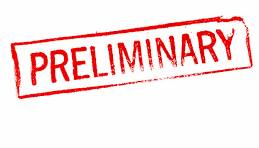
When buying a home, it’s easy to assume that if a property has been sitting on the market for a long time, there must be little to no competition. While that can be true, it’s not always the case—and assuming otherwise can lead to costly surprises. One of the most important steps your real estate agent should take before you write an offer is checking whether there are any offers in hand or if another one may be coming in.
In real estate, timing changes everything. A home that’s been quiet for weeks—or even months—can suddenly attract attention. Maybe a price reduction just happened. Maybe a buyer who toured earlier came back for a second look. Maybe interest rates shifted, or a new buyer entered the market. Momentum can build quickly, even when it seems unlikely.
That’s why communication between agents matters. A good buyer’s agent will always call the listing agent to ask a few key questions: Are there any offers in hand? Has there been recent activity? Is anyone expected to submit an offer soon? These conversations don’t guarantee answers, but they provide valuable insight that can shape your strategy.
Knowing whether there’s competition can impact how you approach your offer. If another offer may be coming in, you might decide to act sooner, tighten timelines, or present stronger terms. On the other hand, if there’s truly no activity, you may have room to negotiate more confidently. Either way, having information allows you to make informed decisions instead of guesses.
It’s also important to remember that not all buyer interest is visible online. Some buyers wait, hesitate, or move quietly. Others are out of town, finalizing financing, or coordinating contingencies. A property’s days on market don’t always tell the full story.
The bottom line is simple: you never really know what’s happening behind the scenes unless your agent asks. A quick phone call can prevent disappointment, help you avoid losing a home you love, or save you from overpaying unnecessarily.
In real estate, information is power. Even when a home has been on the market for a long time, always make sure your agent checks for offers in hand—or offers on the way. It’s a small step that can make a big difference in protecting your interests and strengthening your position as a buyer.
If you’re considering a move or investment and require a trusted Real Estate Broker, we’re here to assist you. Contact us via email at TEAM@McDanielCallahan.com, complete the form below, or give us a call at 925-838-4300. We are ready to provide expert guidance and support for all your real estate needs. Terry McDaniel DRE License #00941526









